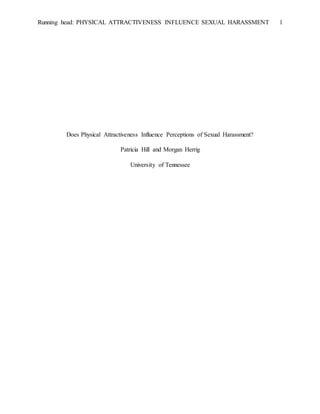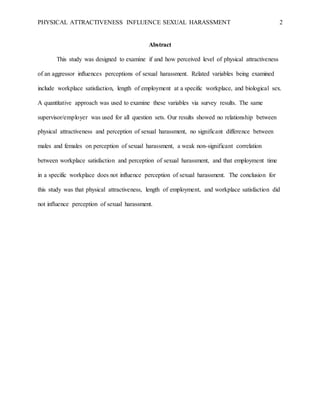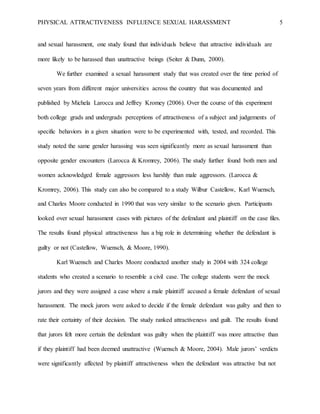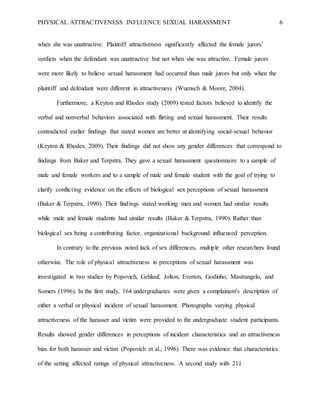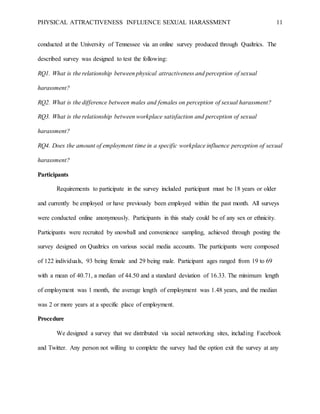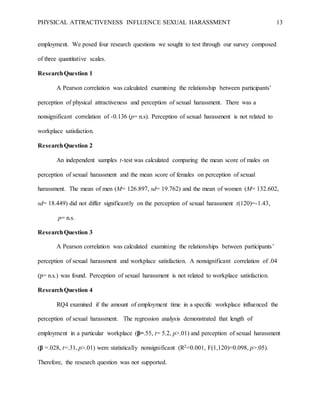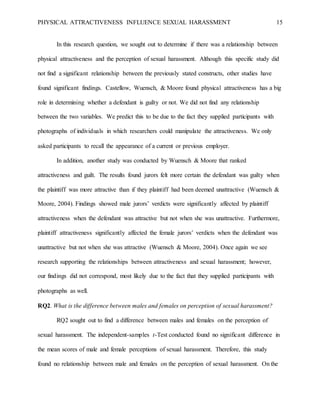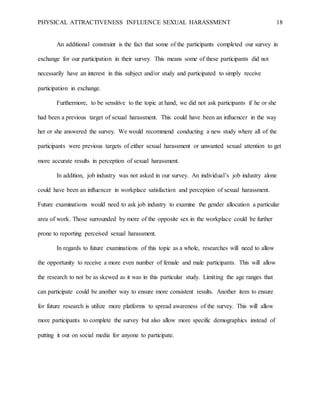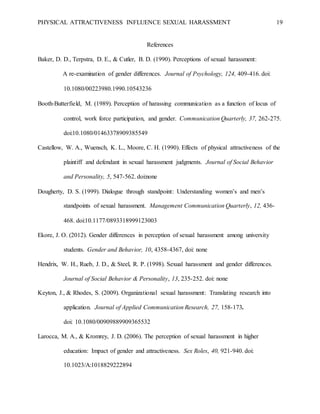This study examined how physical attractiveness, workplace satisfaction, length of employment, and biological sex influence perceptions of sexual harassment. A survey was administered varying the attractiveness of the harassing supervisor. The results showed no relationship between physical attractiveness and perception of harassment. There was also no significant difference between males and females, or influence of workplace satisfaction or length of employment on perceptions. Physical attractiveness, employment time, and satisfaction did not impact perceptions of sexual harassment.
